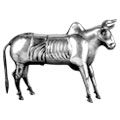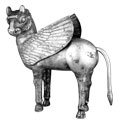Preservation of Cultural Heritage

 Click here to download this article.
Click here to download this article.
“The preservation and protection of the ancient heritage of our human and ancestral civilisations and cultures are among the foremost duties of all nations and governments.
 Between the sixteenth century and the twentieth, millions of ancient artefacts were purchased according to the regulations of the time and taken freely out of the country by foreign lovers of art and travellers, to be added to their public or private collections. This was made possible by the lack of cultural awareness on the part of the governing rulers and the general populations of countries with ancient civilisations
Between the sixteenth century and the twentieth, millions of ancient artefacts were purchased according to the regulations of the time and taken freely out of the country by foreign lovers of art and travellers, to be added to their public or private collections. This was made possible by the lack of cultural awareness on the part of the governing rulers and the general populations of countries with ancient civilisations
I believe that the efforts to collect millions of ancient cultural artefacts by keen enthusiasts in the field who have thorough knowledge and expertise of the correct scientific preservation of those objects have been crucial in preventing their gradual disappearance. Having them displayed in international museums has created the opportunity for millions of visitors from all over the world to see them. This level of interest in turn has been the reason why the scientists, after much deep research and study, have published hundreds of thousands of volumes on the vastness of the ancient civilisations which until then were unknown to the rest of the world. These efforts have been of the greatest service to culture and civilisations of humanity, as well as introducing great art and civilisation to the people of the world. At any rate, these attempts are praiseworthy.”
Houshang Mahboubian is hopeful that UNESCO will once again convene a meeting with the participation of signatory countries of the 1970 Convention in an attempt to put in place appropriate measures, away from prejudice, for the preservation of ancient antiquities. This will be a constructive way to make efforts to prevent the treasures of human heritage from total oblivion and destruction.
The nineteenth and the twentieth centuries were flourishing periods for the discovery and research of cultures, civilisations and arts of the ancient worlds also their exhibition and introduction to the masses. Hundreds of thousands of erudite volumes were published by top scholars and researchers in all fields of the arts. Hundreds of new museums were established in Europe, America and Japan and some older ones were revived and developed further. This encouraged millions of viewers to seek knowledge of the ancient civilisations daily, either for research purposes or for personal enjoyment. As a result of those early cultural enthusiasts’ interest in the early civilisations, a tourist industry emerged which today is a lucrative business in countries where the ancient civilisations were founded.
Houshang is however deeply sorry that in the past two decades there has been an emergence of people with personal and political grudges who either due to religious and creed differences or ignorance and lack of knowledge, and in some instances due to mindless animosity, have used some worthless and out-dated laws to prevent people from benefiting properly from their own national heritage. The Bamiyan Buddha is an example of the above-mentioned.





